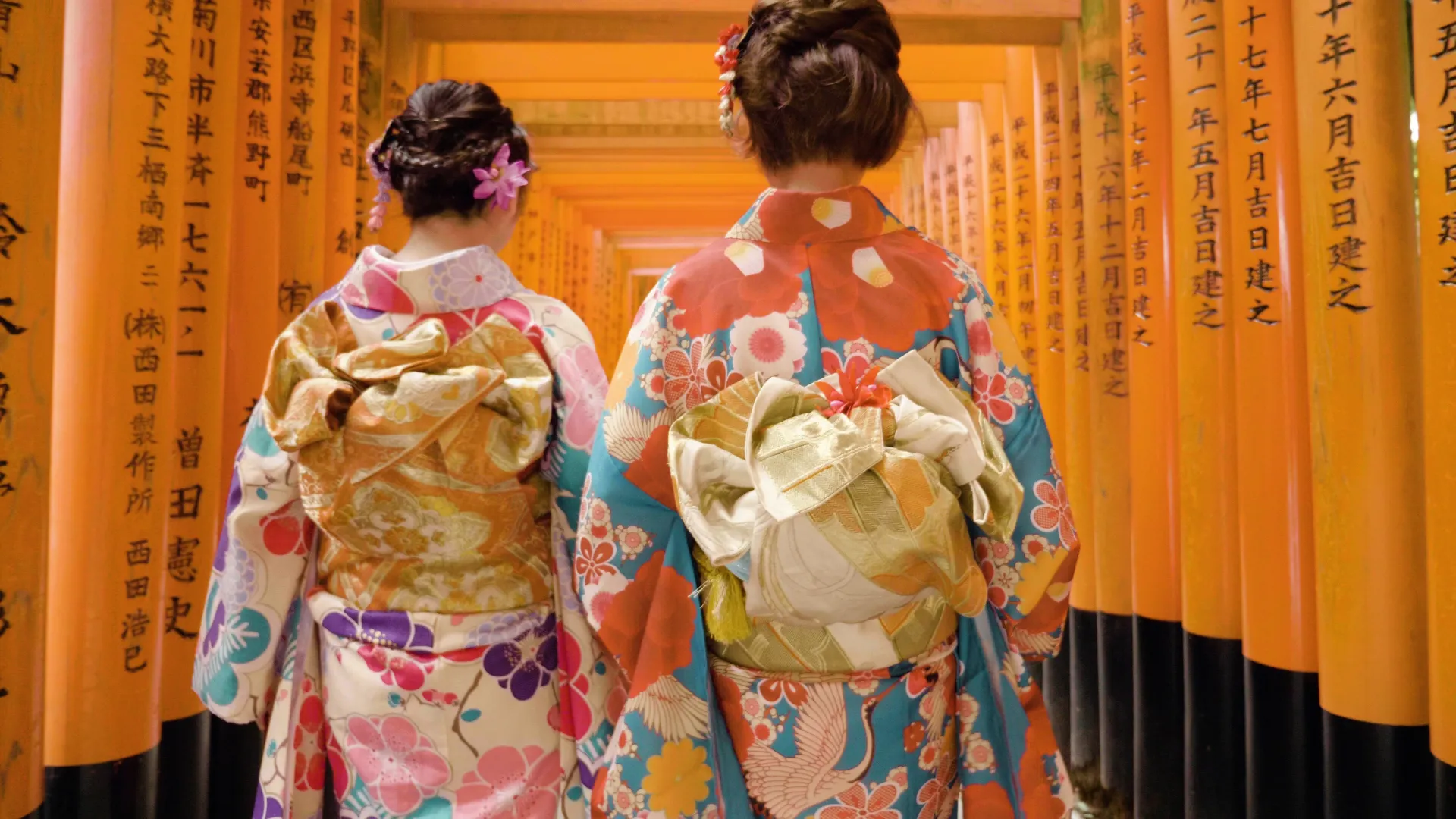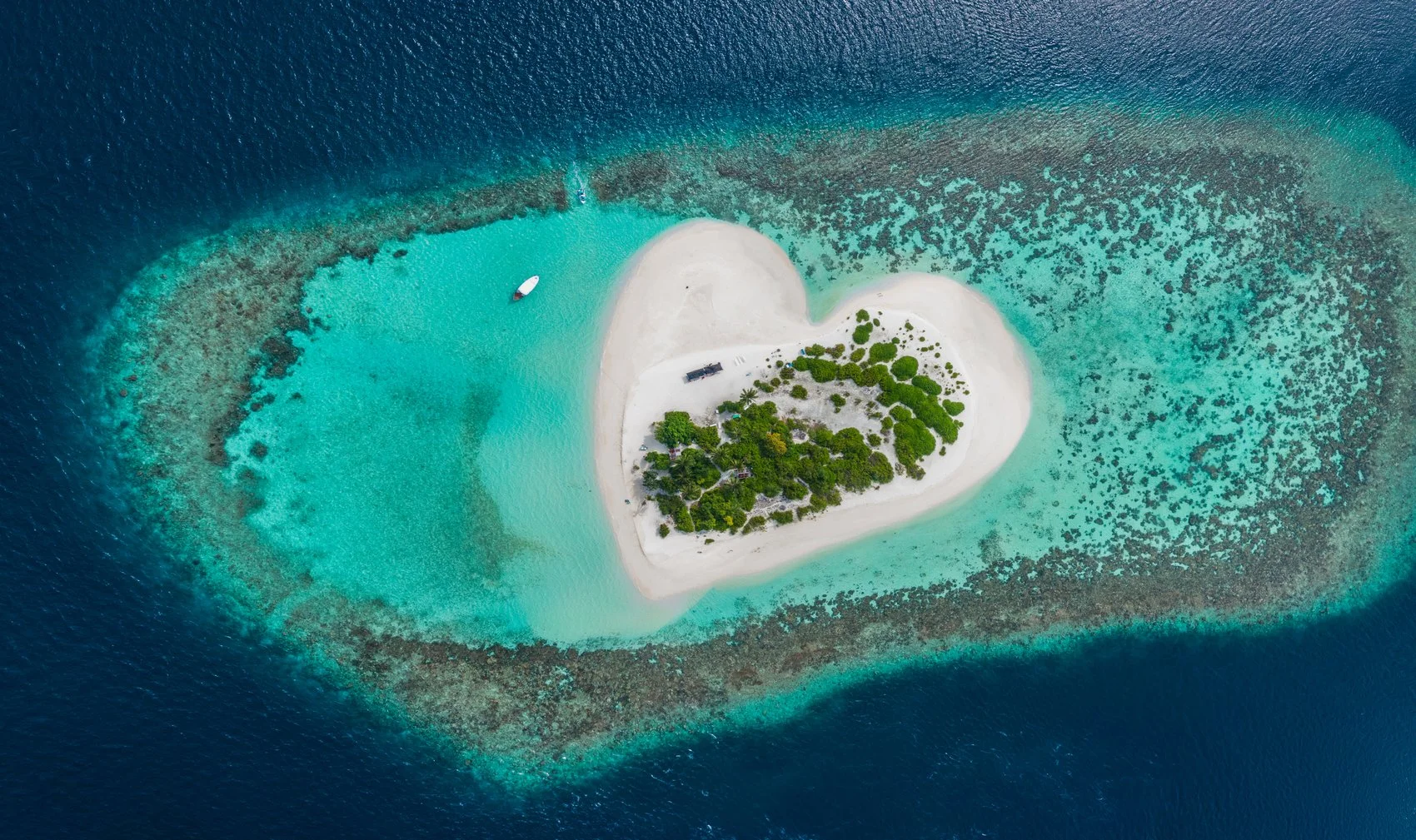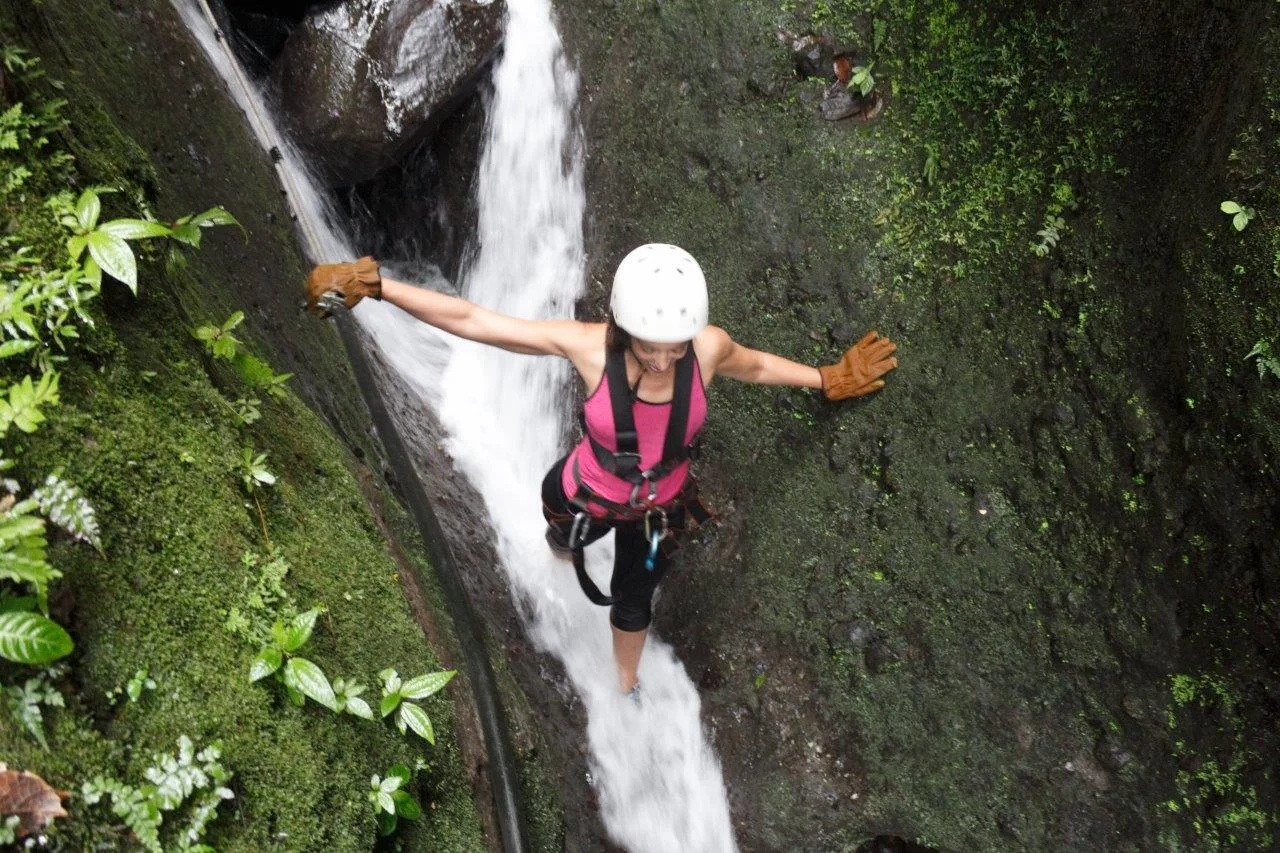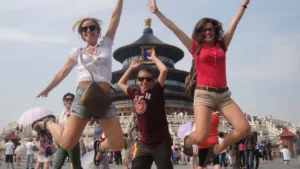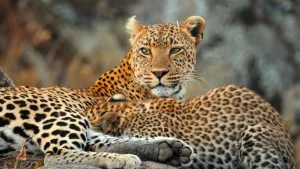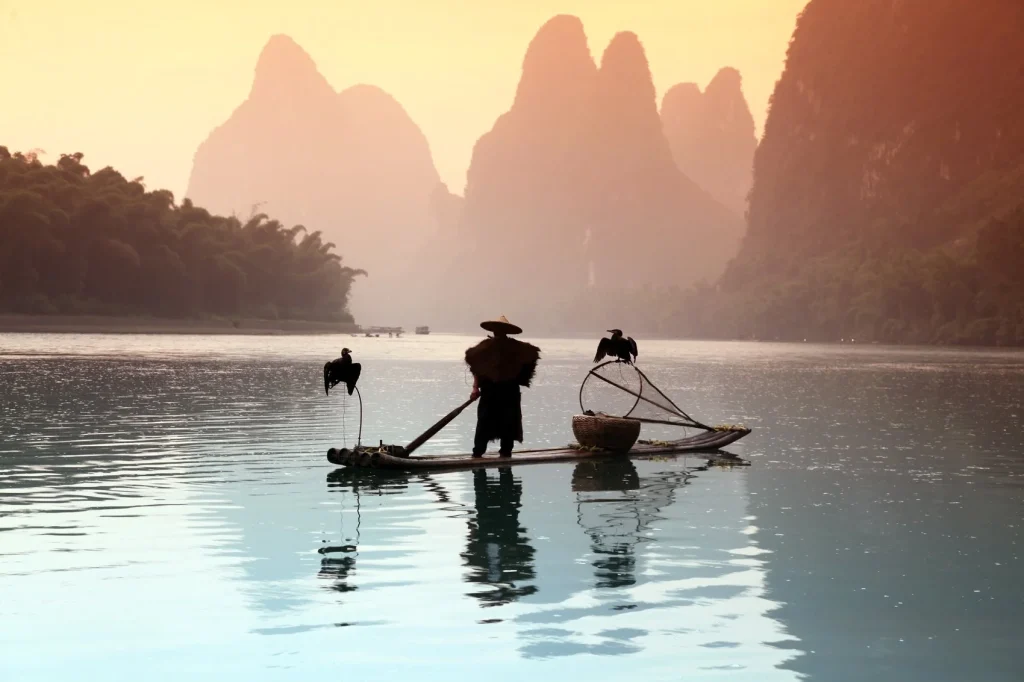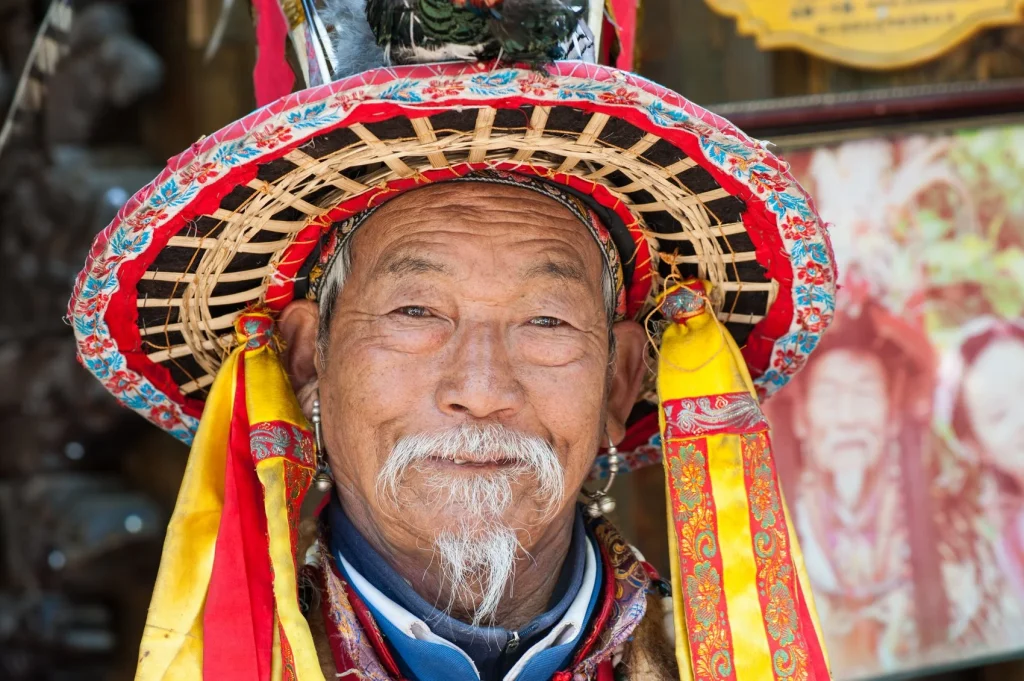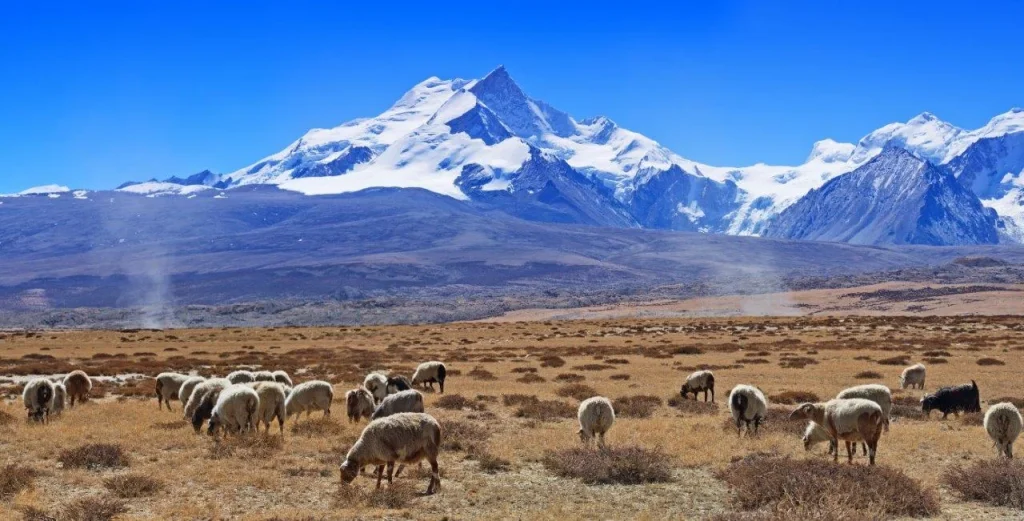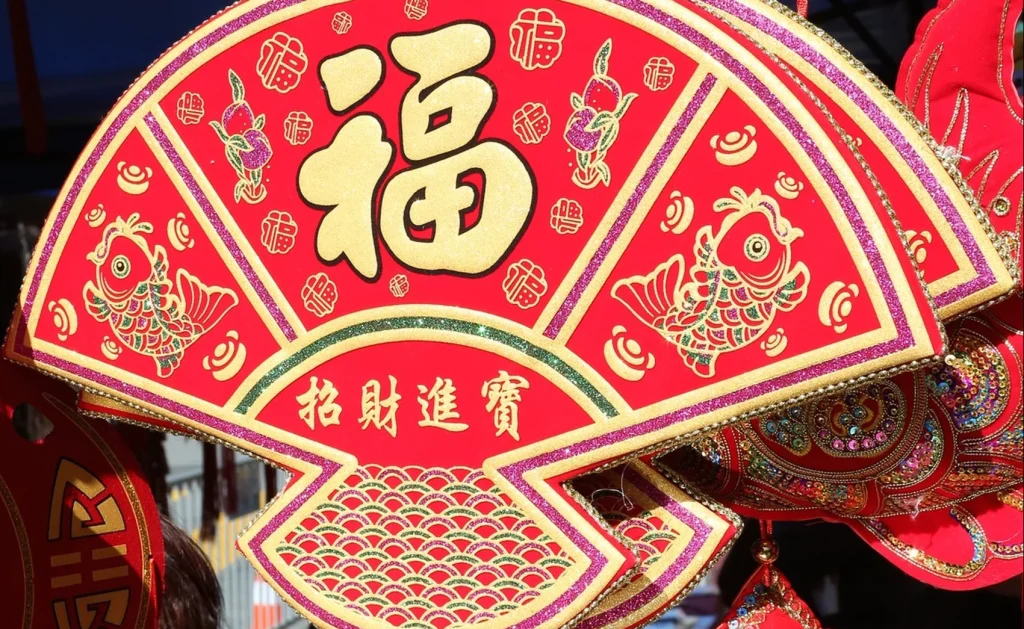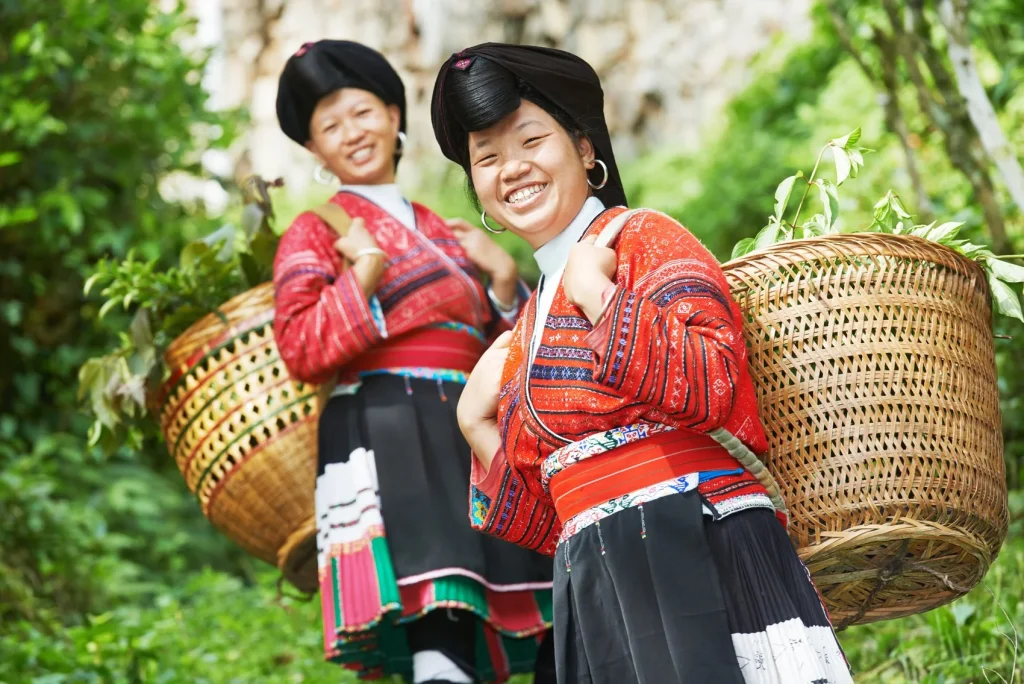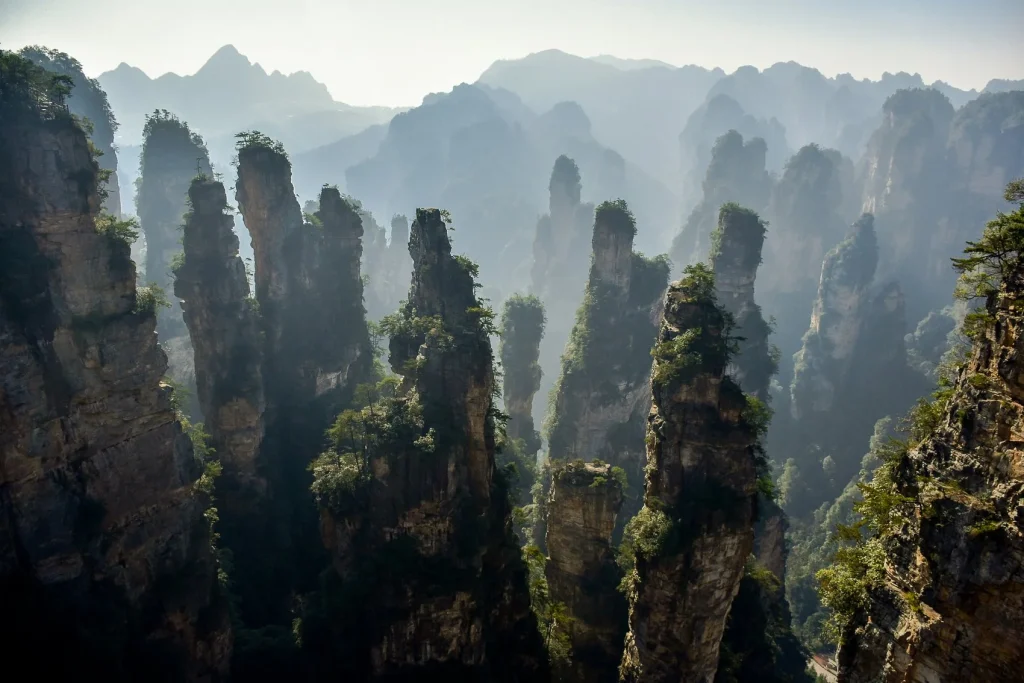Trip Duration:
19 days
Recommended season:
March – May
September–October
China - Trip Summary
A customized 19-day China tour offers an immersive journey through the country’s iconic sites. Starting in Beijing, we’ll explore the traditional hutongs by rickshaw, visit the Forbidden City, and walk the Great Wall. Next, we fly to Xi’an, the ancient capital, to see the Terracotta Warriors and tour the city’s historic sites.
Our journey continues in Tibet, beginning in Lhasa, where we’ll visit sacred monasteries, the Potala Palace, and vibrant markets. We’ll travel to Shigatse, Tibet’s second-largest city, and then to Gyantse, a charming Tibetan town. We proceed to Zhongdian (Shangri-La), an autonomous Tibetan area, where we’ll explore Tiger Leaping Gorge and visit Lijiang to see the Jade Dragon Snow Mountain.
In Guilin, famous for its landscapes, we’ll visit the Longsheng rice terraces and continue to Yangshuo for a bamboo raft ride on the Yulong River and a Chinese cooking class. The tour concludes in Shanghai, China’s largest city, where we’ll tour major sites and visit the water town of Zhujiajiao.
This personalized tour bridges tradition and modernity, from imperial heritage to stunning scenery. Comprehensive services, led by an English-speaking private guide, ensure a memorable travel experience at your pace and style.
Tibet • Yunnan • Culture
Day 1: Arrival in Beijing - Hutong Alleyways- Peking Duck
Arrival in Beijing, where you will meet our representative at the airport and transfer to the hotel. Beijing is the capital of China and one of the oldest cities in the world, as well as one of the four ancient capitals of China. The vast city, covering an area of approximately 16,800 square kilometers, is located in the northeast of the country, and its literal translation is “Northern Capital.”
On the way, we will stop to visit the 798 Art District.
After resting and refreshing, we will embark on a rickshaw tour through the hutong alleyways. These narrow streets are lined with traditional courtyard houses, showcasing examples of traditional architecture and urban life in the old city. Afterward, we will continue to the vibrant Wangfujing pedestrian street.
In the evening, we will enjoy a Peking Duck dinner. The duck will be served roasted and sliced thinly, accompanied by crispy pancakes, a mixture of chopped herbs, and a sweet sauce. The restaurant where you will dine has received numerous awards and traditionally roasts the duck in a brick oven, enhanced with fruitwood for a richer aroma.
Overnight in Beijing.
Day 2: Beijing - A Journey Through Imperial History
After breakfast, we will visit the Forbidden City, which served as the palace for Chinese emperors from the mid-reign of the third emperor of the Ming Dynasty until the end of the reign of the last emperor of the Qing Dynasty. The Forbidden City was the home of the emperor and his family for nearly 500 years, as well as the political and ceremonial center of the Chinese government.
It is called the “Forbidden City” because the emperors who lived there did not allow anyone to enter or leave without their permission. Since 1924, after the last emperor, Puyi, was expelled, the city has been open for visitors and has become a national museum.
We will visit Tiananmen Square, a vast square in the center of Beijing named after the Tiananmen Gate, which was built by the Ming Dynasty and is one of the most significant symbols of China. The square has hosted many important and historic events throughout Chinese history, including the proclamation of Chinese independence in 1949, along with countless cultural events, speeches, parades, and various cultural activities. Surrounding the square, you can find the Monument to the People’s Heroes, the Great Hall of the People, and Mao’s Mausoleum.
Afterward, we will enjoy a view from Coal Hill and continue to visit the restored Qianmen Street.
Overnight in Beijing.
Day 3: Beijing - The Great Wall
After breakfast, we will drive approximately an hour and a half for a day trip to the Great Wall of China. The Great Wall is considered one of the Seven Wonders of the World and stretches over 6,350 kilometers. Its construction began over 2,000 years ago when China was unified into a single kingdom by the Qin Dynasty. Parts of the wall were built by independent states and later unified into one wall by the Qin Dynasty. (Ascent and descent from the wall will be by cable car.)
Afterward, we will continue our visit to the Summer Palace, including a boat ride on the lake.
In the evening, we will enjoy an exciting Kung Fu show. This performance combines dance, acrobatics, and, of course, Kung Fu. The story follows a young boy wandering outside one of the many temples in China, dreaming of becoming a master of the martial art. The show first premiered at the Red Theatre in 2004 and has since presented two performances daily, attracting both tourists and local audiences.
Overnight in Beijing.
Day 4: Beijing - Xi'an - Treasures of the Ancient Capital
After breakfast and according to your flight time, we will transfer to the airport for your flight to Xi’an, the ancient capital of China. Xi’an is located at the eastern end of the Silk Road, where the main trade routes between the Far East and Europe passed. As a central hub in China, it is a melting pot of people, culture, and cuisine from all over the country.
Upon arrival, we will embark on a city tour. We will visit the city walls, which were originally part of the imperial palace of the Tang Dynasty and were rebuilt in the 14th century by the Ming Dynasty, which also gave the city its current name, Xi’an.
Next, we will tour the Muslim Quarter of Xi’an, the heart of the Muslim community in the city, where a unique blend of Chinese and Arab cultures can be found. The Muslim Quarter was established about 1,000 years ago when traders and students from Arab countries arrived in Xi’an, which was a key stop on the ancient Silk Road.
Afterward, we will visit the Big Goose Pagoda and the local markets. At the end of the tour, we will transfer to the hotel.
In the evening, enjoy a Dim Sum meal. The name means “small touches to the heart,” referring to a Chinese meal made up of small dishes that originated in Canton but gradually spread throughout China.
Overnight in Xi’an.
Day 5: Xi'an - Terracotta Warriors - Lhasa
After breakfast, we will visit one of the most remarkable sites in Xi’an—the Terracotta Warriors. This site features an army of 6,000 life-sized soldiers and their horses, made from fired clay, standing ready to protect the emperor on his journey to eternity.
Afterward, according to your flight time, we will transfer to the airport for your flight to Lhasa, the capital of Tibet, which is now an integral part of China. Its name means “Land of the Gods” in Tibetan. The city was established in the mid-7th century and has served as the religious and political center of the Tibetan people and Tibetan Buddhism, as well as the historical residence of the Dalai Lama (until he fled to Dharamshala in 1959, where he established the seat of the Tibetan government-in-exile). Lhasa is located at an elevation of 3,650 meters above sea level, on the northern bank of the Lhasa River.
Upon arrival, transfer to the hotel.
Overnight in Lhasa.
Please note the altitude advisory for the trip.
Day 6: Lhasa - Mystical Palaces and Monasteries
After breakfast, we will embark on a day tour of the city and its surroundings. We will visit the Potala Palace, the former residence of the Dalai Lama, the spiritual leader of the Tibetans. This magnificent structure, known for its unique architecture, features white and red walls that rise to a height of 115 meters.
Next, we will visit Drepung Monastery, the largest monastery in Tibet, established in 1416 and located about 5 kilometers outside the city. The monastery served as the residence of the Dalai Lama until the Potala Palace was built.
We will also explore Sera Monastery, perhaps the most beautiful of the Tibetan monasteries, situated on the outskirts of the city. This complex spans over 10 square kilometers. We will continue our tour along Barkhor Street, which encircles the temple. This street is bustling with pilgrims who traditionally walk around it in a circular route, both day and night.
We will visit the colorful markets of the city, filled with vibrant carpets and textiles, stalls of dried fruits, prayer wheels, and souvenirs for both tourists and the pilgrims who frequent the city.
At the end of the tours, we will transfer to the hotel.
Overnight in Lhasa.
Day 7: Lhasa - Shigatse
After breakfast, we will visit Norbulingka Park, which surrounds the Norbulingka Palace, the traditional summer palace of the Dalai Lama from 1780 until the 14th Dalai Lama was exiled in 1959. The park is considered the largest man-made park in Tibet, covering an area of approximately 360 acres.
Afterward, we will drive for about 6 hours along the Yarlung Tsangpo River to Shigatse, the second-largest city in Tibet. Situated at an elevation of 3,900 meters, Shigatse is the residence of the Panchen Lama, the second most important spiritual leader in the Tibetan hierarchy.
Upon arrival, we will visit Tashilhunpo Monastery, the largest active monastic institution in Tibet today. We will continue to explore the old part of the city and, of course, its colorful market.
After that, we will transfer to the hotel.
Overnight in Shigatse.
Day 8: Shigatse - Gyantse
After breakfast, we will drive for about an hour and a half to Gyantse, a charming Tibetan town located on the way to Nepal, approximately 200 kilometers from Lhasa. The route takes us through beautiful landscapes of 4,000-meter-high mountains, lakes, and rivers. The town retains its Tibetan characteristics, including its architecture, with minimal Chinese and Western influence.
Along the way, we will stop for a viewpoint of Yamdrok Lake and Kharola Glacier.
Upon arrival in Gyantse, we will visit the unique Pelkhor Monastery, which is surrounded by a wall that extends over the surrounding hills, enclosing it within a circular and jagged area. In the center of the complex are three main buildings used for prayers and gatherings.
Next, we will visit the Kumbum Chorten, built in the 15th century. This pyramidal structure has 9 stories and contains 108 small prayer rooms.
After that, we will transfer to the hotel.
Overnight in Gyantse.
Day 9: Gyantse - Lhasa
After breakfast, we will visit the ancient fortress of Gyantse. The climb to the fortress is worth it for the breathtaking views that unfold along the way (from the top, you can also see the monastery). Along the path within the fortress, among its rooms and balconies, you can appreciate the reconstruction of Tibetan noble assemblies and the exploitation of Tibetan kings over the farmers and common people.
Afterward, we will drive approximately 5.5 hours back to Lhasa. Upon arrival, transfer to the hotel.
Overnight in Lhasa.
Day 10: Lhasa - Zhongdian
After breakfast and according to your flight time, we will transfer to the airport for your flight to Zhongdian (also known as Shangri-La), the capital of the Tibetan Autonomous Prefecture—an area famously referred to as the “Land of Shangri-La.”
From this town, situated at an elevation of 3,200 meters, you can enjoy beautiful views of snow-capped mountain peaks, monasteries, and Tibetan villages. Although Zhongdian is still considered under Chinese sovereignty, the authorities make every effort to preserve the Tibetan character of the town in terms of its buildings, places of worship, the appearance of the residents, and traditional clothing.
Upon arrival, transfer to the hotel.
Overnight in Zhongdian.
Day 11: Zhongdian - Discovering the Heart of Shangri-La
After breakfast, we will visit the old town of Zhongdian and the Tibetan temple built in 1679, which is currently home to about 500 monks.
We will continue through the stunning landscapes of deep river valleys and impressive views in the Shangri-La Valley to visit Pudacuo National Park.
This park is part of the “Three Parallel Rivers” area, which has been designated as a UNESCO World Heritage Site. In the park, we will encounter unique flora and fauna native to the region. Afterward, we will enjoy hospitality at the home of a Tibetan family.
At the end of the tour, we will transfer to the hotel.
Overnight in Zhongdian.
Day 12: Zhongdian - Tiger Leaping Gorge - Lijiang
After breakfast, we will drive for approximately two and a half hours to visit two of the most beautiful and impressive natural sites in Yunnan: the first bend of the Yangtze River as it descends from the Tibetan plateau and the Tiger Leaping Gorge, where the Yangtze River rushes between the cliffs. Here, we will enjoy a short hike along the riverbanks.
Afterward, we will continue with a drive of about an hour and a half to Lijiang, a picturesque town on the border of Tibet, located in a valley surrounded by snow-capped mountains. The town has a history of over 800 years and was first established during the late Song Dynasty and early Yuan Dynasty. Lijiang was once an important trading center on the route that transported goods from Yunnan to Tibet and also served as a cultural and economic hub for the Naxi people, one of the last matriarchal cultures in the world.
In 1996, the town suffered significant damage from an earthquake and underwent extensive reconstruction, with many of the houses, bridges, and streets rebuilt. The prominent feature of Lijiang that represents Naxi culture is the diversity of residential styles. Special attention has been given to the decoration of the houses, particularly the arches above the entrances, balconies, doors, windows, and roof beams, all of which can be seen today while wandering the streets of the old town, “Dain,” which has been designated as a UNESCO World Heritage Site.
Upon arrival, transfer to the hotel.
Overnight in Lijiang.
Day 13: Lijiang - Jade Dragon Snow Mountain
After breakfast, we will visit the “Jade Dragon Snow Mountain,” which rises to over 5,500 meters. We will take a cable car up to 3,000 meters above sea level and enjoy a short hike.
Afterward, we will descend by cable car and enjoy a minority performance—an outdoor show in the largest open-air theater in the world featuring singing and dancing that showcases the traditions and lifestyles of the ethnic groups. This production is another work by the renowned Chinese director Zhang Yimou (VIP seating).
Next, we will visit Yufeng Village and its temple, as well as Baisha Village, where we will admire the impressive murals and explore the village.
Then, we will return to Lijiang and visit the old town, with its cobblestone streets, bridges, and streams. The town features beautifully preserved wooden architecture, stone squares, and is vehicle-free, abundant with tea houses, cafes, and inviting small restaurants.
Overnight in Lijiang.
Day 14: Lijiang - Guilin
After breakfast and according to your flight time, we will transfer to the airport for your flight to Guilin. This is one of the most impressive scenic and natural areas in China. The karst peaks, which create unique landscape formations, the bamboo-covered hills, the flowing river, and the prevailing mists in the area have inspired Chinese painters for centuries.
Upon arrival, we will visit Seven Star Park, a vast park covering more than 120 acres. The park is located on the eastern bank of the Li River, about 1.5 kilometers from the city center, and features ancient caves within the stone peaks, walking trails, and green, tranquil spaces. The park has seven peaks (hence its name), which some say resemble the constellation “Ursa Major.”
Next, we will continue to Elephant Trunk Hill, which rises 55 meters above the ground and stands on the western bank of the Li River. This hill, which has become a symbol of Guilin, got its name due to its shape resembling an elephant drinking water from the river with its trunk.
After that, we will transfer to the hotel.
Overnight in Guilin.
Day 15: Guilin - Longsheng - Rice Terraces - Yangshuo
After breakfast, we will drive approximately two and a half hours for a tour in the Longsheng area. The tour will take us through agricultural landscapes, where we will admire the rice terraces that utilize every piece of land for cultivation, allowing us to glimpse the authentic lives of the local residents. During the visit, we will enjoy a hike of about 50 minutes to a viewpoint for stunning views of the terraces and will also visit local villages.
After that, we will continue our drive for about 3 hours to Yangshuo, a picturesque town known for its stunning karst landscape and vibrant, colorful market located along the banks of the Yulong River. Surrounded by towering limestone peaks, Yangshuo is a haven for outdoor enthusiasts, offering activities such as cycling, hiking, and bamboo rafting. The town’s lively atmosphere is enhanced by street performances and local cuisine. Upon arrival, transfer to the hotel.
Overnight in Yangshuo.
Day 16: Yangshuo and Surroundings
After breakfast, we will embark on a bamboo raft ride on the Yulong River. This journey will take us between stunning cliffs while observing the tranquil lives of the villagers and the unique lifestyle of the fishermen along the river.
In the afternoon, we will hike to Moon Hill, where you can enjoy a panoramic view of the area (the climb is challenging but well worth the effort—the scenery definitely justifies the exertion!). Afterward, we will visit local villages in the vicinity.
Next, we will explore the West Street of Yangshuo, known for its vibrant atmosphere, shops, and cafes.
In the evening, enjoy the spectacular show “Impressions.” Directed by the renowned Zhang Yimou, who also directed the opening ceremony of the Olympics, this performance features over 500 local performers, with the natural landscape serving as a stunning backdrop enhanced by lighting effects.
Overnight in Yangshuo.
Day 17: Yangshuo - Cooking Workshop - Guilin - Shanghai
After breakfast, we will enjoy a cooking workshop lasting approximately 3 hours. We will head to the local market, accompanied by the chef, who will explain the ingredients we will purchase for preparing the meal.
Back in the kitchen, we will learn about cooking techniques in Chinese cuisine and prepare several dishes. To conclude the workshop, you will enjoy a lunch made from your own creations.
Afterward, depending on your flight time, we will drive back to Guilin and transfer to the airport for your flight to Shanghai.
Shanghai is the largest city in China and the most populous city in the world. The city is situated at the mouth of the Yangtze River and, unlike other cities in China, does not belong to any specific province. Shanghai is divided into two parts, separated by the Huangpu River. The cosmopolitan Shanghai offers visitors unique architecture that blends European styles with modern skyscrapers, Buddhist temples, green parks, and a rich cultural life.
Upon arrival, we will transfer to the hotel.
Overnight in Shanghai.
Day 18: Shanghai - Urban Adventures in the Pearl of the Orient
After breakfast, we will ascend to an amazing viewpoint from the Shanghai Tower, one of the tallest towers in the world and a symbol of modern China. The tower rises to a height of 468 meters and was the tallest building in China until 2007.
Next, we will visit the Old City of Shanghai, including Yuyuan Garden, the nearby markets, and the ancient synagogue. We will then explore the lively French Concession area, known for some of the oldest and most impressive buildings in the city, constructed in European styles that give the area a “Paris of the East” atmosphere. This vibrant district is filled with dozens of galleries, shops, restaurants offering cuisine from around the world, cafes, and pubs.
After that, we will take a stroll along the Bund, the riverfront area lined with colonial buildings. The Bund has been one of the city’s symbols for over 100 years. On one side are well-preserved colonial buildings that give the promenade a European character, including many hotels, banks, and commercial establishments. The other side of the Bund features the towering skyscrapers of the Pudong district, which have become synonymous with the city.
We will continue to visit Nanjing Road, the main shopping street in Shanghai.
In the evening, enjoy an acrobatics show that combines dance and traditional Chinese martial arts with special effects, lighting, and original music.
Overnight in Shanghai.
Day 19: Shanghai - Zhujiajiao - Shanghai - Airport
After breakfast, we will drive for about an hour to the water town of Zhujiajiao. Zhujiajiao is a water town with a history of over 1,700 years. The town served as an important trading center for the surrounding rural area, and many of the ancient buildings from the Ming and Qing Dynasties have been well preserved.
We will stroll through the town and observe the local way of life, as well as the preserved ancient architectural style.
Afterward, we will drive back to Shanghai. Upon arrival, depending on your flight time, we will transfer to the airport for your flight back home.
Unforgettable Journey, Designed for You.
Unforgettable China Your Way
More Popular Tours in China
Why Discover China
with
Us?
We take care of everything for you—crafting a personalized itinerary, booking all services, and handling every detail, big and small. All you need to do is pack and get ready to enjoy a seamless, unforgettable travel experience tailored just for you and your loved ones.
Travelers Testimonials
Flawlessly Organized Adventure
Our trip was perfectly planned—top-notch guides, hotels, and personalized attention while keeping our independence. China amazed us with its culture, history, landscapes, and food. Every trip there is a new experience. Hard to resist planning another journey with you—it’s already in the works!Gideon & Michael
“A Wealth of Unforgettable Moments”
Our journey was filled with beauty, kindness, tai chi in the parks, joyful evenings, and stunning places. With Muscat's perfect planning, amazing guides, and rich cultural experiences — we came home with a heart full of unforgettable moments and a desire for more.Shuli & Yehoshua Weistuch
“An Unforgettable Journey”
Our trip was outstanding! Japan amazed us with its order, smiles, and precision, while China’s beauty and vibrant energy were unforgettable. The food, from refined Japanese dishes to incredible Peking duck, was a highlight. Your care throughout the journey made a real impact. Already planning our next trip!Dr. Abraham Hess
“A Remarkable China Journey”
"Our journey through China was exceptional! Every detail was handled with professionalism, from stunning locations to seamless logistics. The itinerary, guidance, and organization were flawless. Thank you for your attentiveness and expertise—we truly had an unforgettable experience. Can’t wait for our next trMira & Jacob Har Zion
“Remarkable journey”
This was one of the best and most enriching trips we've taken. The itinerary, hotels, guides, and logistics were flawlessly executed. Every detail was thoughtfully arranged, with full support along the way. An unforgettable journey and truly outstanding value.Recommended by Tahar & Elisha
“Your service exceeded expectations”
Thank you for organizing an amazing trip and an experience we’ll never forget. Every detail was handled with care, and even mid-trip changes in China were managed efficiently and with full attention to our needs.Recommended by Kazan Family
“Unforgettable, forever!”
Everything ran like Swiss clockwork. The itinerary was excellent, the guides were warm and professional, and the hotels were amazing - some were attractions themselves. We felt cared for every step of the way. Thank you for an unforgettable experience!Recommended by Doris Gale
“Led with heart and detail”
China surprised and amazed us - but it was Muscat’s attention to every detail, from the incredible guides to the warm Passover welcome in Beijing, that made this trip unforgettable. Sulu in Kunming was a true gem. We were in the best hands, start to finish.Recommended by Sam and Ethan Fields
“China topped them all”
I’ve never spoken about any trip the way I talk about China. It topped even my favorite destinations. We experienced the old and the new, the beauty and the grit - and your personal care gave us the peace of mind to truly enjoy it all.Recommended by Yakutieli Families
“An experience beyond words”
We had an incredible journey through China - rich in culture, cuisine, and stunning views. The itinerary was seamless, the guides were excellent, and the communication with Muscat was always professional and responsive. We’ll definitely return for more!Recommended by John, Jerome, and Amy
“Beautifully organized trip”
We just returned from a beautifully organized trip to China. The itinerary was excellent, the guides outstanding, and the logistics smooth and timely. The birthday surprise in the room was a lovely touch. We’ve already passed along our recommendation!Recommended by Alisa Harper
Wonderful Trip and Great Service
The trip was amazing! Knowledgeable guides and drivers, great birthday surprises. Highly recommend to our friends. Thank you!Pia and Sean Gold
